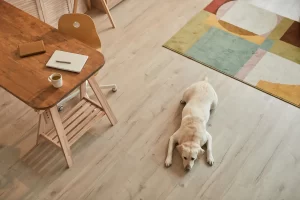Different Types of Floor Epoxy

Floor epoxy is a popular material used in both commercial and residential spaces. There are many different types of floor epoxy, so you can find one that meets your specific needs. Solid epoxy floors come in several different colors and can be applied almost anywhere. They are a practical choice for rooms that have solid colors and no elaborate designs, such as kitchens or bathrooms. You can also choose a solid epoxy floor for your deck, driveway, or living room.
Full color flake coatings have a full-coverage layer of color over the base epoxy coat. This method enables you to create custom blends of flake colors, which provides additional thickness and durability. Then, you can add a clear topcoat, or wear coat, to lock in the color flakes. A clear topcoat has a protective layer that prevents color flakes from transferring to the sub-surface. This coat is a great option for garages because cars emit corrosive chemicals and water.
An added bonus of floor epoxy is that it is very cost-effective. The best part is that you don’t have to replace your flooring, so you won’t need to pay for installation. Plus, it won’t take as long as other flooring types, so you can save on installation costs and money. And because of its water and shock resistance, it won’t need to be redone for a long time. You can also rest assured that your floor will look great for years to come.
When buying a floor epoxy, look for its abrasion rating. You should look for a coating that has an abrasion rating of at least 25mgs, and at least fivemgs for commercial applications. This is a good indicator of quality and durability, but it shouldn’t be your only consideration. For example, an epoxy with a five-mgs abrasion rating is much more durable than a lower-priced floor epoxy.
Before applying floor epoxy, make sure that the surface is properly prepared for coating. You should also allow at least 24 hours for the floor epoxy to dry. Keep the area warm during this time and be sure to avoid walking on the floor while it’s drying. Then, add a non-skid coating and you’re done! This flooring solution is ideal for kitchens, bathrooms, basements, locker rooms, sports arenas, and garages, among many other places.
A typical maintenance schedule is simple: run a soft dust mop over the floor weekly and vacuum visible construction joints and saw cuts monthly. A soft cloth can be used to wipe up spills, and a light cleaner can be used to remove any grit or film that may have formed after cleaning the floor. It’s important to note that it is important to follow all maintenance guidelines outlined by your floor epoxy manufacturer. Otherwise, you’ll run the risk of damaging your floor’s finish.
The next step is to remove oil and grease stains from the floor. If the floor is greasy, it may need to be cleaned with an industrial-strength cleaner before applying floor epoxy. Afterward, you can use a fine-grit sandpaper to remove any residual rubber. Finally, a high-pressure washer can be used to clean any remaining impurities. The process takes a day, but it will guarantee you a durable floor.






